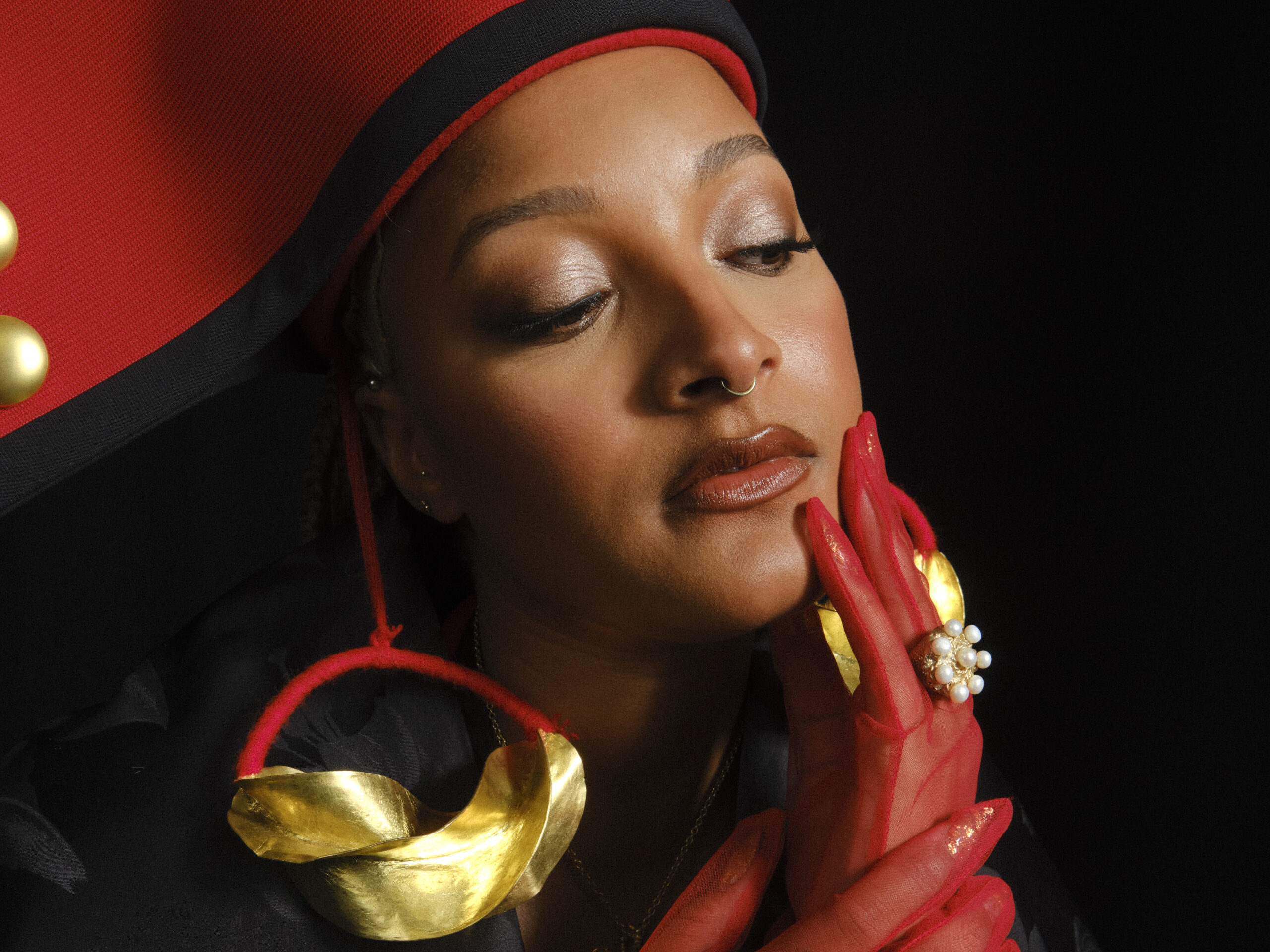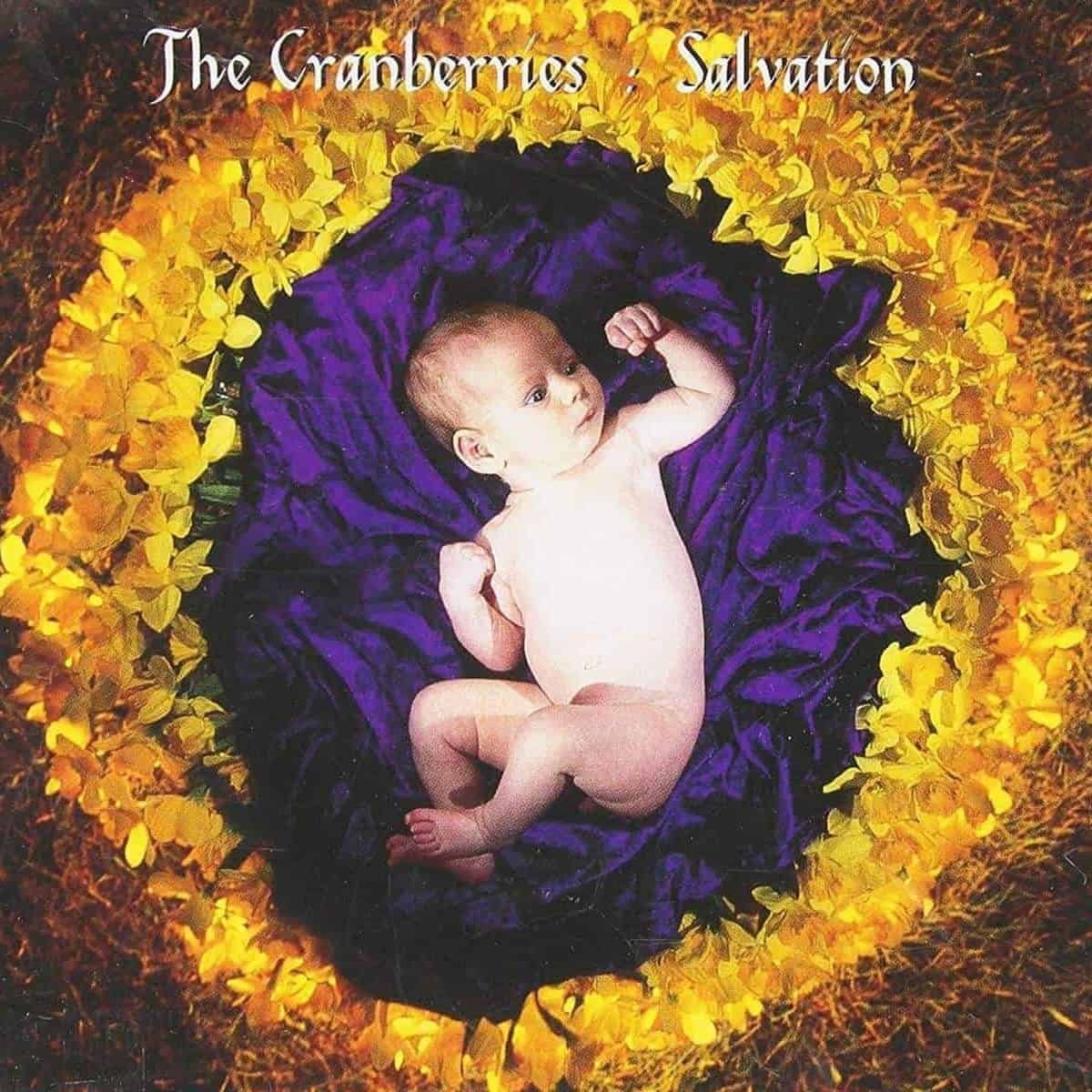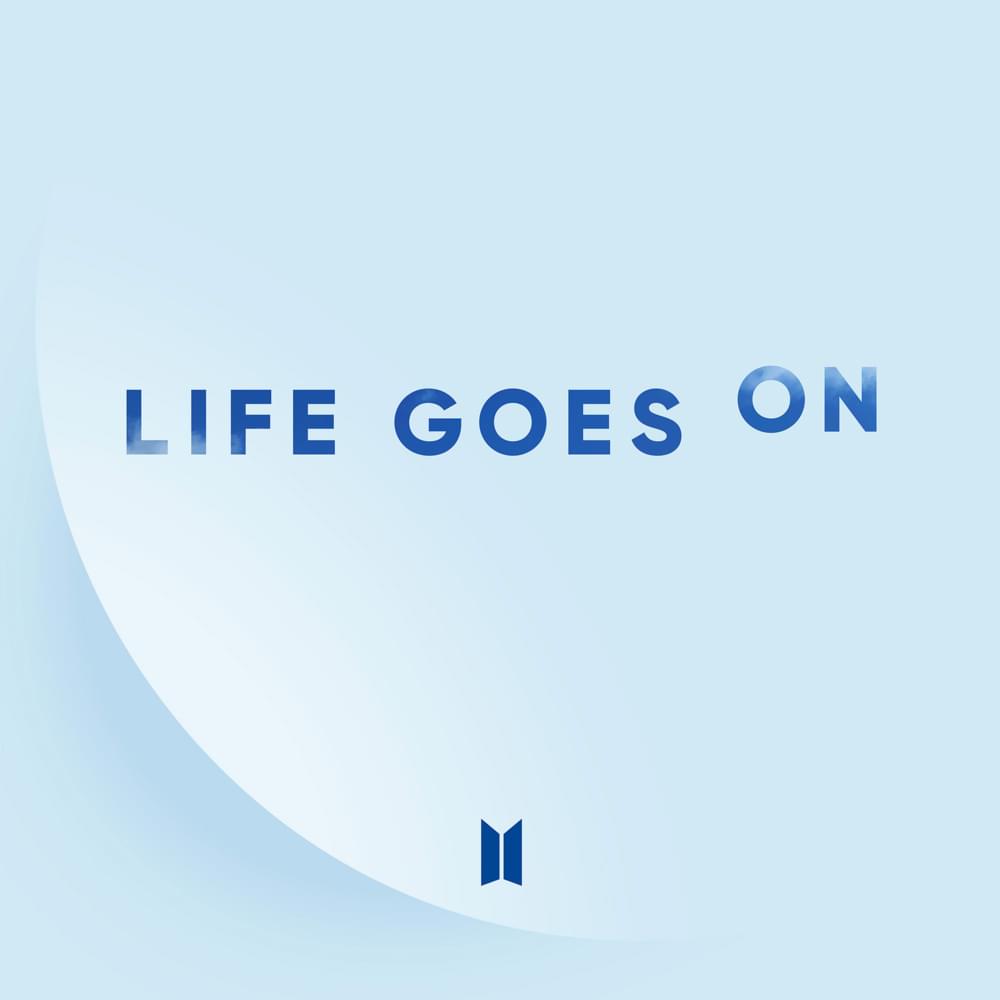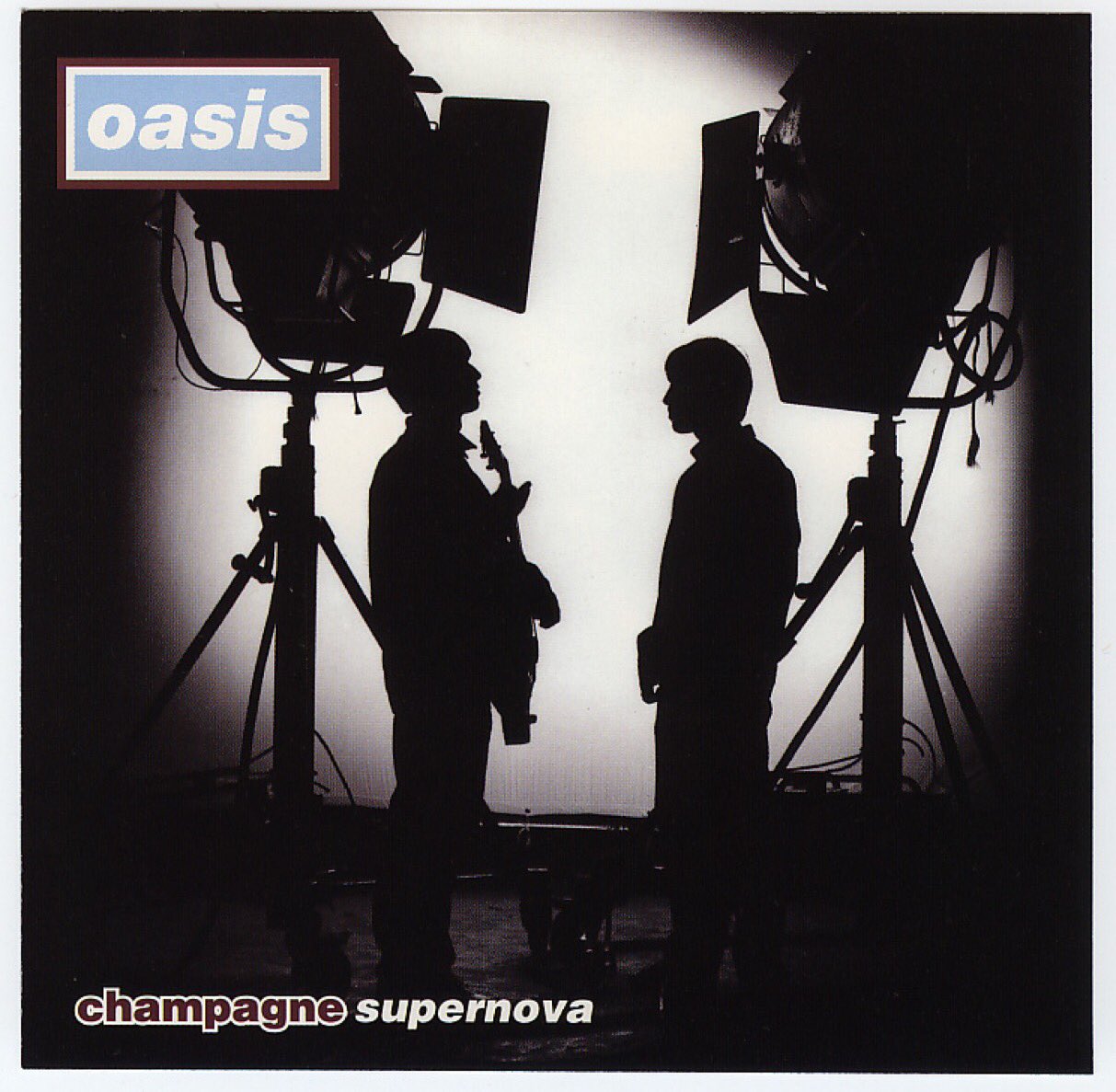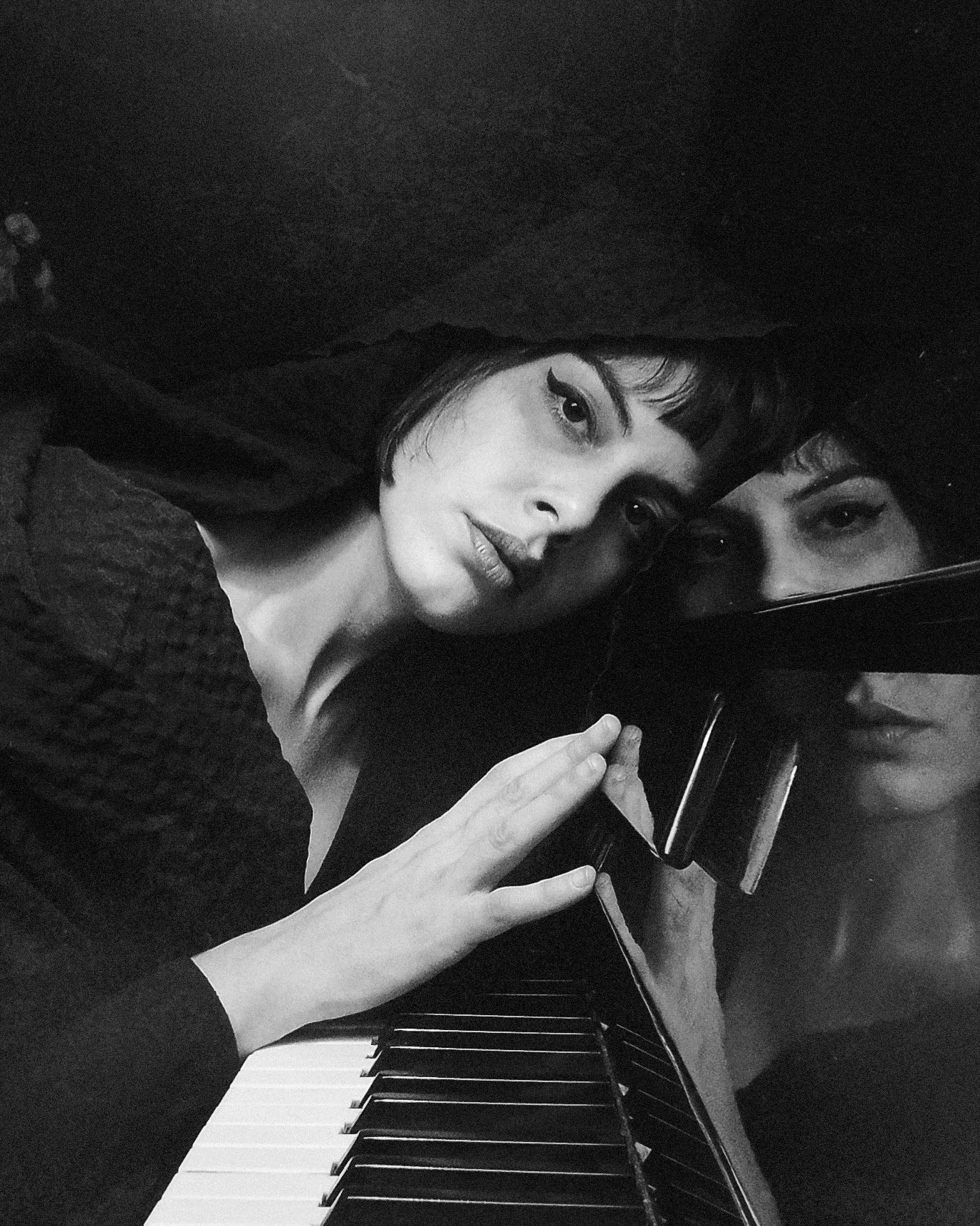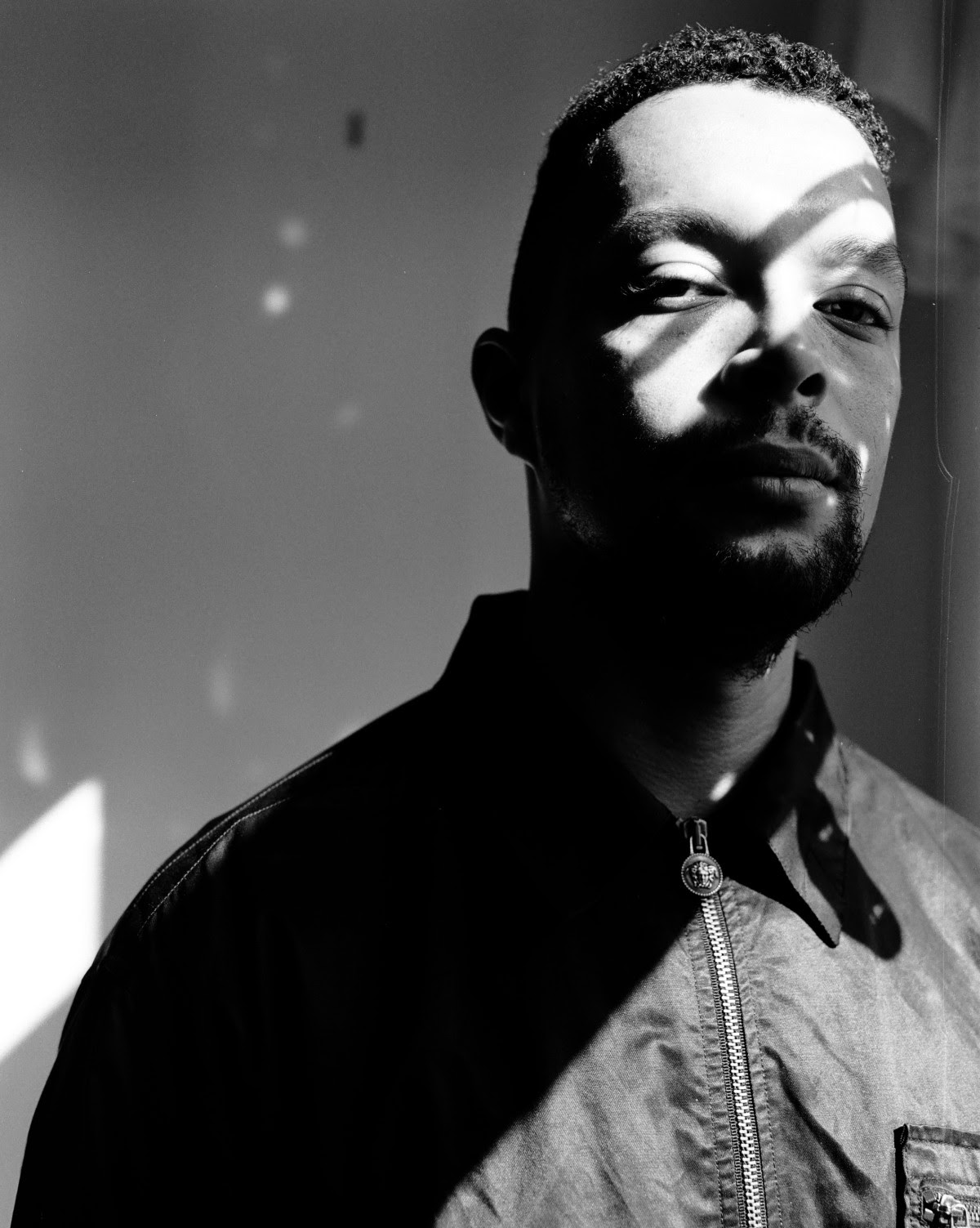Nubya Garcia's moment seems to have come at last. And it's weird to say "at last" about someone who's only in her early thirties, but I've been listening to her music for the better part of a decade.
I first met Garcia in January 2018 when she came to New York for Winter Jazzfest. I sat down in a rehearsal room at the New School with her, Shabaka Hutchings, and trumpeter Yazz Ahmed for a roundtable interview about their music, the state of British jazz, the impact of Brexit, and much more. At that time, her debut EP, Nubya's 5ive, had only been out for a few months, but she was already making a name for herself alongside tuba player Theon Cross and as a member of the groups Maisha and Nérija. She was subsequently featured on five of nine tracks on We Out Here, a compilation curated by Hutchings that was intended to showcase the new London scene. Clearly, she was at its heart.
Over the next couple of years, Garcia put out another EP, When We Are, and guested on albums by Ezra Collective, Sons Of Kemet, Makaya McCraven, Moses Boyd, Ahmed, and more. Then, in August 2020, she released her full-length debut, Source. It was a really good album. It featured her longtime collaborators Joe Armon-Jones on keyboards, Daniel Casimir on bass, and Sam Jones on drums, as well as several guest vocalists and horn players from the London talent pool, and the music blended jazz, dub, Afrobeat, and cumbia into a sound that was identifiably hers. But touring was impossible, so it didn't get the attention it might have.
She was finally able to support Source (and its remix album, Source ⧺ We Move) on the road in America in spring 2022, when she was tapped to open a string of concerts for psychedelic instrumental mood-rock act Khruangbin. I spoke to her for the second time during that tour, and she was excited to finally share the music with audiences. "Yeah, it's crazy to only be touring it here in America now, but it's just how it is, you know?" she said. "This is one of the things that's happened after the pandemic. Everything has been delayed, and it's kind of really lovely that it's getting a new lease on life. There's still people that are discovering it yesterday, and today, and will tomorrow."
After releasing a split live LP with Khruangbin culled from two nights at Radio City Music Hall, Garcia has returned with Odyssey, her second full-length and her most ambitious work to date. Although it's shorter than its predecessor — 53 minutes to Source’s 61 — it's a far more epic record and a truly bold artistic gesture. Her live quartet of Armon-Jones, Casimir, and Jones are back, as are friends and peers Sheila Maurice-Grey (trumpet) and Rosie Turton (trombone), but the album also features guest vocals from esperanza spalding, Georgia Anne Muldrow, and Richie Seivwright, here going by just her first name. Oh, and seven of its 12 tracks feature a 12-piece string section culled from the Chineke! Orchestra, the first professional European orchestra to be made up of majority Black and ethnically diverse musicians.
Garcia wrote all the music herself, including the string arrangements, and co-produced the record with creative partner Kwes, who also worked on Source. "I've never written for strings, which is ridiculous, right? That I decide to go so in and write seven string tunes," she says with a laugh, on the phone from London. "I completely bit off more than I could chew, but succeeded, because here we are and we're talking about it."
She feels grateful to have had some youthful experience to draw on. "I know the ranges of instruments, thank God, because I used to play the violin and the viola, but that was like a good 14, 15 years ago. I haven't picked it up since. But I would like to say that my stint in orchestras from the age of five to 18 got me some good ears, some great intuition and like... skills, hearing skills for figuring out how I wanted to do this. It felt like a very organic, natural exploratory process."
The actual work was both arduous and instinctive. The pieces were all written for the quartet, so they could be performed live, and the strings were always considered an additional element. "Obviously I had the main part of the tunes done — bass, keys, drums and saxophone. And then I just kind of like filled the rest of the space with the strings. Ideas after ideas kept flowing, which is very rare. Like, I'm not saying that this happens a lot, but when you do get in your flow state, you know, and that's a really beautiful, sacred space."
The actual recording process was separated into segments. "I had a week with my band to get everything down, to get the foundation set, and so we could do whatever we wanted. And then I had a week in Japan on tour, where I was finishing the strings and arranging things. Then I came home, had another week, and then I fashioned what I had already fully into what we had recorded and the arrangements that we'd set in the studio. And then when I came to record the strings, they were recording to what we had done. And then in the post-production process, me and Kwes sat and produced and mixed for like I don't know how long, but some time afterwards. And that was the last stage where I could arrange things that weren't sitting well. You know, I thought that they would work. They did work in practice. But hey, I want to try this thing real quick. Can we just cut this here and cut that there, or put that there and put that there?"
We rely on reader subscriptions to deliver articles like the one you're reading. Become a member and help support independent media!
The guest vocals were all done remotely, and the performers wrote their own lyrics. Garcia had conversations with Muldrow and Richie "to kind of set the scene of, this is what I was thinking about when I wrote the music." With Muldrow, it became something more: "a really lovely conversation about where we're at, what we're doing, what our intentions are within music." The exchange with spalding was slightly different; "I sent her the track and it was more of a like, 'Hey, do you want to?' And then she was like, 'Yes, and here's what I've been thinking of.' And then sent me these very beautiful lyrics, and a kind of story around it, and I was like, this is amazing."
Those collaborations inspired Garcia to write lyrics of her own for Odyssey’s closing track, "Triumphance," a tune she hadn't even been planning to record. "We've been finishing the gig that way for maybe two and a half years now. That kind of has been a long-standing tradition [and] I wasn't going to record it because I wanted it to feel like, oh, you can only hear this live. And then obviously changed my mind through sincere persuasion from people who love the track."
Garcia, Armon-Jones, Casimir, and Jones are a hardened touring unit at this point; they've been all over the world, playing to audiences ranging from clubs like New York's Le Poisson Rouge to massive outdoor festivals. They've been performing "Solstice" live for some time. Garcia says, "That one's been getting some really exciting stage moments over this summer." But a lot of the material for Odyssey was written on a break from the road — "I wish we'd maybe tested more [material live], but that is because I hadn't written it yet …I toured, then we came home and I really started to finish stuff then." They've been back out on the road in the lead-up to the album's release, though, and have been adding singles "The Seer," "Clarity," and "Set It Free" to the live set.
Garcia is an excellent live performer who dances to the microphone and puts on a show; she's not cowed by a big stage. And her compositions have hooks that reach the last row, and are always built atop a solid groove. She's cited Dexter Gordon as an influence, but to me her music is part of a lineage that runs through Stanley Turrentine, Grover Washington Jr., and other "soul jazz" players who were more interested in getting a crowd on its feet than displaying ultra-technical chops.
To her, it's all about communication. "I'm just aiming for people who love music… I just want to feel like everybody's welcome in the space of the room and the gig and it feels accessible, but no one's kind of not playing what they want to play or not being themselves to invite other people into this space. We might go a bit harder at a standing venue, but sometimes you don't even know — if I'm at a concert hall and we're really going hard that night, we're going hard that night."
In addition to her own album, Garcia can be heard on two other excellent 2024 releases. She's on Casimir's album Balance, which I reviewed last month; it's a big band record with strings, densely orchestrated and compositionally stunning. "I remember him transcribing scores when we were on the road, maybe in 2022," she says. "He always had his iPad and his pen out, or his laptop, in the car or the plane or whatever, and I was like, What are you working on? And he would tell me, I'm transcribing this Rachmaninoff, or something. I'm inspired by him and inspired by his album. The tunes are full of energy… it's really progressive and forward-thinking and unique in his musicality and he's a masterful arranger, composer, and orchestrator, as you can hear."
She also appears on Nala Sinephro's Endlessness, which is discussed below. A 10-track disc that's actually a single 45-minute composition, it's an unclassifiable mix of ambient electronic music, modern classical, and spiritual jazz, and Sinephro did everything: she wrote it, played synths and electronics, produced and engineered it, mixed it, and even mastered it.
"Nala is my friend, and we travel together and regularly get into the nitty gritty about music and life," Garcia says. "And it was just a really peaceful, welcoming, open, beautiful space. Witnessing her construct this sublime album as we were both working on our own records, it's been amazing to see… I think I feel really honored to be a part of this record because it's stunning. The sessions, I remember just feeling like light and emotive and like they could go anywhere. And that's always super exciting as a musician."
Odyssey is a grandiose title, but the album lives up to it. Nubya Garcia is a seriously impressive musician on every level: writer, player, producer and arranger. And like her peers — Shabaka Hutchings, Kamasi Washington, and James Brandon Lewis, among others — she's offering her music to anyone who wants to hear it, refusing to color inside the lines or stay within the fence that separates jazz from entertainment. If you haven't been paying attention until now, the moment has come.
TAKE 10
Nicole Mitchell & Ballaké Sissoko - "Tara"
This collaboration between Chicago-based flutist Nicole Mitchell and Malian kora master Ballaké Sissoko (joined by balafon player Fassery Diabaté, vocalists Fatim Kouyate and Mankwe Ndosi, as well as an American rhythm section of guitarist Jeff Parker, bassist Joshua Abrams, and percussionist JoVia Armstrong) is a brilliant fusion of jazz and West African music that sets up trancelike grooves over which the women's voices float like hummingbirds. The music was recorded in 2017, but the genesis of the project goes back a full decade, to a fortuitous first meeting between Mitchell and Sissoko in Paris. "Tara" is a short, beautiful song on which everyone is heard to advantage. It begins with the hard slap of hand drums, at which point the kora and the singers come in, with Mitchell also playing the vocal melody. The balafon, a xylophone-like instrument, has a pleasing, woody sound that creates brilliant countermelodies amid the whirl. (From Bamako*Chicago Sound System, out now via FPE.)
Jazz at Lincoln Center Orchestra with Wynton Marsalis - "Garvey's Ghost"
There's much, much more to jazz history than playing standards. This fierce live album by the Jazz at Lincoln Center Orchestra proves that, paying tribute to drummer and composer Max Roach with an hour of music from his 1950s and 1960s recordings, re-arranged for big band (five trumpets, three trombones, five saxophones, piano, bass, and drums) by drummer Obed Calvaire. Calvaire also composed the final piece, "Between Max And Ti-Roro," and delivers announcements throughout. On "Garvey's Ghost," originally from Roach's 1962 album Percussion Bitter Sweet, Carlos Henriquez delivers a forceful introductory bass solo, after which the entire ensemble moves into a lush and ever-shifting Latin-derived orchestration, punctuated by thunderous drum breaks and hot solos from Marsalis and pianist Dan Nimmer. While composers like Darcy James Argue, Maria Schneider, and Miho Hazama may be taking big band music in more overtly experimental directions, the JLCO is doing really strong work, too. (From The Music Of Max Roach, out now via Blue Engine.)
Arashi with Takeo Moriyama - "Colour Flames"
Alto saxophonist Akira Sakata is a maniac. In addition to making some of the most extreme free jazz ever heard starting in the 1970s, he's also a marine biologist and does comedy on Japanese TV. I even saw him play live with DJ Krush once. For a decade or so now, he's been leading Arashi, a trio with bassist Johan Berthling (of Fire!) and drummer Paal Nilssen-Love (of many, many projects). This album was recorded live in 2019, and on it the group is joined by another legend of Japanese free jazz, drummer Takeo Moriyama, with whom Sakata played in pianist Yosuke Yamashita's trio in the mid '70s. Arashi was already a high-intensity trio, but adding Moriyama to the mix pushes the energy level all the way into the red, especially when he and Nilssen-Love are dueling, as on this track. This is free jazz of the "holy shit" school. (From Tokuzo, out now via Trost.)
Rob Mazurek Exploding Star Orchestra - "Underneath The Star Dome"
A planetarium is the perfect context in which to see/hear trumpet player Rob Mazurek's Exploding Star Orchestra. Their music is absolutely cosmic, somewhere between Sun Ra and '70s Miles, with Damon Locks' poetry and digital manipulations adding a 21st century dimension. This edition of the group is absolutely stacked: Nicole Mitchell on flute and electronics, Tomeka Reid on cello, Craig Taborn, and Angelica Sánchez on keyboards, Ingebrigt Håker Flaten on bass, Chad Taylor and Gerald Cleaver on drums. And as might be expected, the 41-minute performance, recorded in Chicago in March 2023, is continuous but broken into six tracks. "Underneath The Star Dome" is sort of the peak moment of the whole thing, with a gorgeous cello solo from Tomeka Reid and some killer horn from Mazurek, though the double drum solo in the next track, "Spiral Parable 1A," is as epic as you're probably imagining. This shit is head-spinning. (From Live At The Adler Planetarium, out now via International Anthem.)
Ingebrigt Håker Flaten (Exit) Knarr - "Free The Jazz"
Bassist Ingebrigt Håker Flaten, probably best known as a member of The Thing and Atomic, first assembled (Exit) Knarr as a one-off, to perform at the Vossa Jazz Festival in his native Norway. But now, with a few membership changes, they're back for a second go-round. This studio debut is a tribute to jaimie branch, who was a friend of Håker Flaten's and a bandmate in multiple contexts over the years. The music doesn't share the West African punk groove of branch's own Fly Or Die band, but it has the same anarchic spirit that fueled the three amazing studio albums that crew made. "Free The Jazz" features fierce interaction between piano and electric guitar that reminds me of mid '80s Tom Waits, as the saxophonists emit harsh squeals, periodically making room for an exultant three-horn fanfare. The bass is a huge thumping heartbeat pushing everything forward all the time. (From Breezy, out now via Sonic Transmissions.)
Jason Stein - "Crystalline"
Bass clarinet player Jason Stein hasn't made an album as a leader since 2018's After Caroline. (That album featured photography by his cousin, the comedian Amy Schumer; his band also opened one of her NYC concerts.) Anchors is performed by a trio featuring bassist Joshua Abrams and drummer Gerald Cleaver; guitarist Boon, who also produced the record, plays on its opening and closing tracks. Stein is a member of Abrams' Natural Information Society, which is a very groove-oriented band, verging on North African trance music at times. While the 12-minute "Holding Breath" swings, this music is otherwise very much the opposite of that. "Crystalline" is stark and introspective free jazz almost in the Roscoe Mitchell tradition, with plenty of space between instruments and extreme low and high frequencies floating past each other, leaving the listener to fill in the gaps. Stein's clarinet flutters, Abrams' bowed bass groans, and Cleaver's cymbals sing. (From Anchors, out now via Tao Forms.)
Micah Thomas - "The Mountain"
Pianist Micah Thomas has risen quickly on the NYC jazz scene. He's made three previous albums as a leader, and has also worked with alto saxophonist Immanuel Wilkins, the group In Common (co-led by tenor saxophonist Walter Smith III and guitarist Matthew Stevens), tenor saxophonist Zoh Amba and others. Mountains is a carefully constructed ensemble album that features trumpeter Adam O'Farrill, Wilkins, tenor saxophonist Nicole Glover, trombonist Caleb Smith, bassist Kanoa Mendenhall, and drummer Kweku Sumbry on a set of 12 compositions that all weave together in a somewhat continuous and very cohesive tapestry that reminds me of the work of another pianist/composer I like a lot, Victor Gould. "The Mountain" is the album's centerpiece (literally; it's track seven); Mendenhall and Sumbry set up a twitchy rhythm over which the horns play harmonized drones with occasional interjections from Wilkins or O'Farrill. It feels like music for a road trip. (From Mountains, out now via Artwork.)
Walter Smith III - "Office Party Music"
There are multiple layers of connection among the four musicians on this record. As the title three of us are from Houston and Reuben is not suggests, saxophonist Walter Smith III, pianist Jason Moran, and drummer Eric Harland are all from Houston, Texas, and in fact are all graduates of that city's Kinder High School For The Performing And Visual Arts, though Smith is the youngest of the three at 43 (Harland is 47, Moran 49). The pianist and drummer worked together on Moran's debut, Soundtrack To Human Motion, and they all played on Smith's 2010 album III. Bassist Reuben Rogers is originally from the Virgin Islands, but he, Moran and Harland are all members of Charles Lloyd's band, and he and Harland played on Smith's Casually Introducing. So it's no surprise that the music on this album exudes friendship, comfort, and a telepathy honed over decades. "Office Party Music" is a ballad, but one that throbs with emphatic life. (From three of us are from Houston and Reuben is not, out now via Blue Note.)
Nala Sinephro - "Continuum 2"
Composer and electronic musician Nala Sinephro's previous album Space 1.8 received rave reviews back in 2021; it was hailed as a new classic of ambient spiritual jazz. This follow-up features several of the same musicians, notably Nubya Garcia, who's only featured on three of the 10 tracks but feels like one of the album's key voices. On "Continuum 2," she's joined by Sheila Maurice-Grey on flugelhorn, Lyle Barton on piano, and Natcyet Wakili on drums, plus a 21-piece string section. Sinephro plays modular synth, keyboard-driven synth, and harp. Garcia's solo, slow and patient, seems to come floating in on a cloud, not unlike Pharoah Sanders' work on the Floating Points album Promises. Like that album, Endlessness is built around a simple, repeating figure, but expands outward until it's an entire world you can walk around in, dreaming. It's one of the most beautiful records I've heard all year, utterly beyond category. (From Endlessness, out now via Warp.)
Black Artists Group - "For Peace And Liberty Part 3"
The Black Artists Group was an arts organization that existed in St. Louis, Missouri from the late '60s to the early '70s. The closest parallel to what they did would be the AACM in Chicago, but where the AACM was entirely music-focused, BAG encompassed theater, poetry, and visual arts as well. Eventually, the government grant funding that had allowed them to get off the ground would dry up and they'd disband, but several members would travel to New York and start new projects. Most notably, Oliver Lake, Julius Hemphill, and Hamiet Bluiett (each of whom recorded extensively as leaders) co-founded the World Saxophone Quartet alongside California transplant David Murray. In 1972, Lake, trumpeters Baikida Carroll and Floyd LeFlore, trombonist Joseph Bowie, and drummer Charles "Bobo" Shaw traveled to France, where they recorded what was until now the only collective BAG release, In Paris, Aries 1973. The album was out of print for decades, though, until receiving a vinyl-only reissue in 2018. Well, now there's a second volume. For Peace And Liberty: In Paris December 1972 features the same musicians; it was recorded a few months earlier, in the studios of ORTF, the French national broadcast corporation of that era. ORTF was disbanded in 1975, but their archives have recently been yielding some incredible out jazz from the late '60s and early '70s, when dozens of American musicians went to Paris. In the last few years, we've gotten incredible recordings from Pharoah Sanders, Ahmad Jamal, and Albert Ayler, and I'm confident there will be much more coming. (I know a guy.) For Peace And Liberty is a single 36-minute piece, divided into six segments "for listener convenience," as they say sometimes. It begins with multiple group members playing percussion, setting out complex interactions that blend jazz and African music in ways not unlike what the Art Ensemble of Chicago or Idris Ackamoor's group the Pyramids used to do. Eventually, though, the horn players return to their main instruments, leaving Charles "Bobo" Shaw to carry the rhythmic load as they go off on various individual journeys. "Part 3," the track streaming here, features some fascinating displays of "extended technique," including eerie hisses and growls, along with gentle and exploratory soloing in a manner that's closer to the loft jazz of the mid '70s than the screaming free jazz of 1964-69. This is a great record, and goes a long way to establishing that BAG were doing something unique and different from the AACM or any other collective of the time, and they deserve to be much better known than they are at present. (From For Peace And Liberty: In Paris December 1972, out now via Wewantsounds.)
OUTWARD BOUND
— Jazz Memes (@JazzMemes_) September 22, 2024
